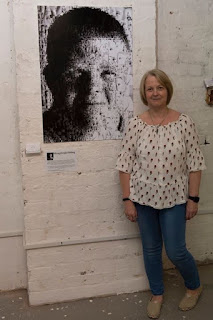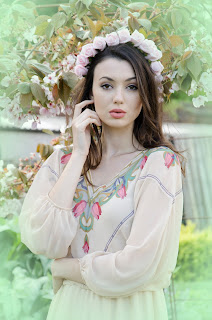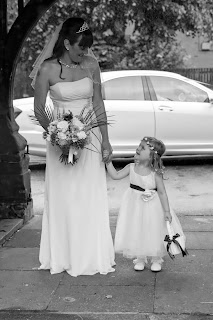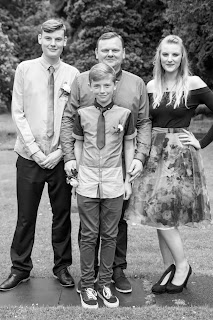Well after two long years it's finally over, no more assignments, or blogs to be written (not that I'm a prolific blogger).
To finalise our second year we had to produce an FMP (Final Major Project), yes another anachronym and put on an end of year Exhibition.
We had originally had to come up with 3 ideas from which we would eventually produce our FMP.
My main objective for this year has been to get people to think about how they see and judge people, especially people with disabilities.
With my contacts at Fox Hollies, it wasn't long before I was in touch with them when I needed to do a research project for my HND. My project was to look at the Freefall Dance Company who are affiliated with Birmingham Royal Ballet, and Fox Hollies School. I wanted to show the young people from the start of rehearsal, to the end of week dance production which would be shown in an evening performance at the Birmingham Hippodrome, and then again to local special schools. It was a great experience from which I have learned a lot about photographing in a theatre, and photographing movement.
From working with these talented young people it spurred me on to look at disabilities through history, and this was the focus of my critical study essay. I won't bore you with the details as it was quite wordy, but I looked at many photographers, some who photograph disabilities, photographers with disabilities, and also the people with disabilities.
To think that this was all spurred on by an exhibition by Bryan Adams (yes the musician), at Somerset House in 2014, that I happened to missed. He had an exhibition of injured war veterans.
I also have a very personal insight into disabilities, as my own son, Aaron was born with Down's Syndrome.
I had all intentions of using different models for my project but it proved difficult to take the young students out of college to attend the college studio, so I had to rely on Aaron, my muse, to be my model.
My plans to produce a Hockneyesque style joiner using a Polaroid camera with Impossible Film did not come to fruition due to expense, although I did use my Polaroid S2300 Instant to produce two mini collages. I also experimented with my Fuji Instax Mini 70, Neo, and Wide, all trying to get different effects. These are really fun cameras to use, and I think that I will have to practice more to find out why I didn't achieve the images I wanted to. (Close up images were blown out due to the flash, which for some reason I couldn't turn off.) The Neo produced some fascinating double exposure mini films. Finally, the Instax Wide which is the closest to Polaroid Impossible Film in size. (I have since found that the close-up attachment for my camera was missing, and therefore I have now managed to purchase one for future use - maybe this would have been the little bit of kit that would have produced the images I wanted, I won't know until I try using it again in the near future.)
In the end, it was my faithful Nikon that came to my rescue. I spent the morning in the studio with Aaron taking close-ups from different angles, different sizes etc, all in the hope that I would be able to produce a collage.
From there, it was a matter of getting the right images that would build up to produce the collage. Lightroom batch edited all the images so that they would all have the same tonal value, but all in all I didn't want to Photoshop Aaron, as I wanted the image that I produced to be Aaron in the raw. I did use Photoshop to mock-up a collage to give me an idea of the final result.
This is my artist statement from the HND Exhibition at Centrala Art Loft, together with the mock-up of my collage.
I had been looking at ideas for displaying my FMP and I had been inspired by the Channel 4 logo which is usually shown in 3D at the beginning of programs.
I didn't want to have just one piece of work for the Exhibition and looked at the idea of producing a Photo Mosaic. I looked on the internet, and at various different software before downloading Photo Mosaic. It was a simple interface that in the end produced a really good final image. I used all of the images taken in the studio of Aaron to produce the final Photo Mosaic. The image that came out was more of a sepia tone due to the skin tones in the original images but I didn't think that it had the impact that I wanted so I decided to convert the image to black and white. (When exporting the image to be printed I didn't realise that the default export is for Web uploading, so when I gave the image to Emma, my tutor, it was too tiny to print. I had to go back into the program and export it so that it was a reasonable size image, not too small, and not too large, just right.)
The week of the 20th June was just crazy leading up to our FMP Exhibition at Centrala Art Loft. All of my images were printed out to A3 size except my Photo Mosaic which was printed out to A1. The 21st was the day that we would put all our work. The space for me was ideal, there were gates/rails in the ceiling from which I could hang my collage. My collage had small silver bulldog clips attached and the images were hung by fishing line/filament. They were hung at different heights, and spaces to produce the final installation. (A big thank you to Emma Jukes for your patience and help in hanging my work.) My Photo Mosaic was placed opposite my collage.
And so it was the big night, the Exhibition of our FMP at Centrala Art Loft. We had a private view for family, friends and colleagues from 6-8pm on the 22nd June. It was an amazing night with a wonderful atmosphere. I had some really great reviews of my work on the night with people asking me the back story to my work - I explained that it was all about perception, and how we look at people and judge them, especially people with disabilities. The aim of my work was that you wouldn't get the "whole picture" until you stood back and took it all in. The same was applied to the Photo Mosaic. For some people they said they were fascinated by all of the little images that finally went on to make up the Photo Mosaic. Again, it was when you stood back from the image, that you could see the full picture. Some guests even took the time out to speak to Aaron, which was absolutely fantastic. All in all it was a very successful night.
Me with the Photo Mosaic courtesy of Paul Johnson Photography.
Me with my collage installation, again courtesy of Paul Johnson Photography.
The Photo Mosaic.
The Photo Mosaic close-up.
The collage.
One comment that my husband made about the collage was that "were the photographs on both sides", and in retrospect that would have been a really good idea, and would have added another dimension to the collage. The only two images that would have needed changing would have been the two top outside images, portrait and landscape. These could easily be changed as I had so many images to choose from. This is obviously something that I will consider in the future if I have another exhibition, especially an installation like my collage.
As part of our Exhibition it was necessary not only to arrange the whole exhibition but also to curate it. My turn came on the Saturday, from 11am-2pm. We had several visitors to the exhibit, including our old tutor, Jo Gane. She was very impressed with the exhibition, and especially she liked how my collage made use of what would have been dead space.
At one stage I got a bit bored so I decided to play with my collage and push the the edges to move it. I then recorded the movement on my iPhone. It really added another dimension to my collage. In fact, a young child, about 10 came into the exhibition and did exactly the same thing as me, although his dad did tell him to stop, which I then told him it was ok. The dad was fascinated by both images which he stood back to admire.
The video taken on my iPhone (shortened in order to upload to Blogger). This may only play from PC's etc.
And then there were none!!
So the final part of my FMP and Exhibition would be to evaluate the whole project, and that would be it for me. HND finished. It has been a real learning experience over the last two years, and it looks like I have found my niche in photography, not to say that I won't photograph other subjects. I may even take in a wedding or two, try fashion (you never know I may like it, well outside the studio anyway), or even just photograph nature in all of its glory. Whatever I photograph I know that I just want to enjoy myself, and have fun. That's what it's all about in the end.
Well, that's my HND blog for the time being. You never know I may get to like blogging, and I may be annoying you with more in the future!! Bye for now.
Morag











































